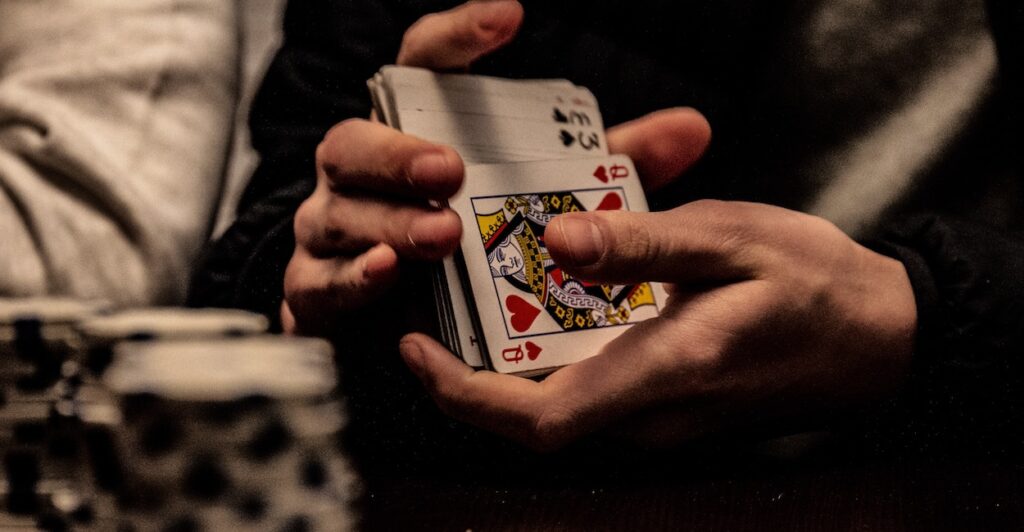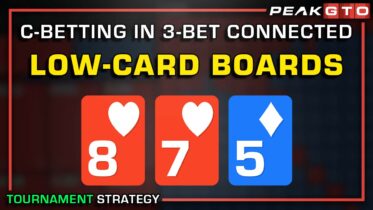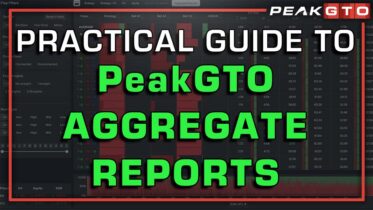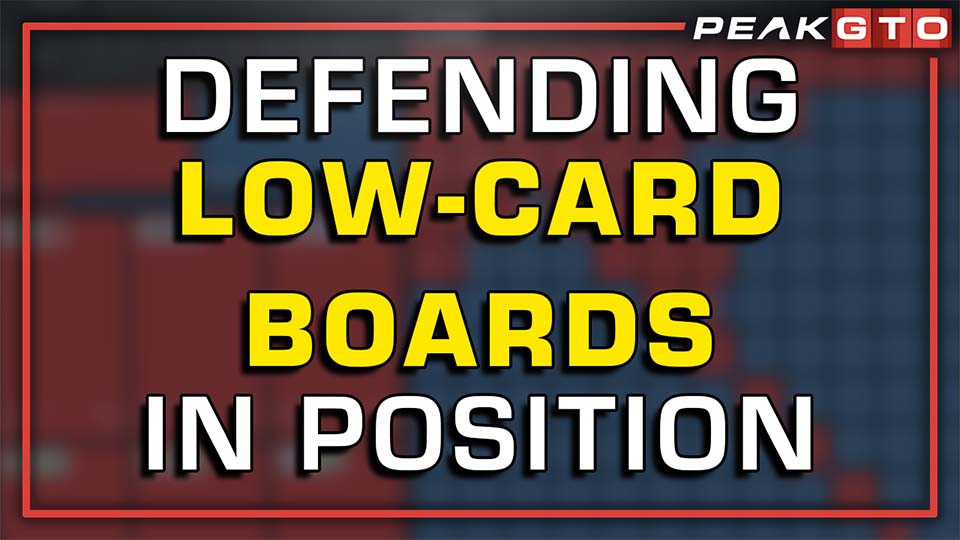Here I continue my discussion about specific at-table strategies that have improved my game, and I cover three important topics: draws, position, and multi-way pots. If you wish, you can start reading at Chapter 1, or download the entire e-book as a PDF.
Playing Draws Aggressively
Here’s a thing that I wish the old Lee had known, five years ago:
Draws are great bluffing opportunities – not lottery tickets.
I used to think of draws as hands with which I called, and then I either made my poker hand or I didn’t. There are two problems with this way of thinking: pricing and probabilities.
Not Getting the Right Price
Let’s say I’m playing $1/$3 no-limit Texas Hold’em, and I have Q♦T♦ in the big blind. The player UTG+1 opens to $12, and only I call. We both started with $300.
With $25 in the pot, the flop is 8♣️-5♦-3♦. I check, my opponent bets $15, and I call. There’s nothing unusual about this – I have a queen-high flush draw, and two overcards. Most poker players would call here. And that’s fine – it’s likely a +EV play.
But let’s go to the next street. With $55 in the pot, the turn is the 2♠️. I check, and my opponent bets $40. I can’t really continue here. I probably have nine solid outs (any diamond), so I’m a 4:1 dog, but I’m only getting 2.4:1 pot odds. Maybe a queen or ten is good, but I have no assurance of that. Furthermore, if I do make my flush on the river, my opponent will see the third diamond arrive, and they might not pay me off.
I am stuck between folding out a lot of equity, or making a call that is very likely -EV.
I Don’t Draw Any Better Than Anybody Else Does

The underlying problem with the “call and get there” mentality is that it doesn’t give me an edge against my opponents. Over time, all of us hit draws with the same frequency. In the above example, when we are on the turn, every last one of us will river the flush 19.6% of the time. Thus, I gain no edge over my opponents by calling and trying to get there because I don’t get there any better than they do.
Whenever I do something that makes me more money (or loses less) than whatever my opponents would do in the same situation, I win money from them. Conversely, if I do the same thing they would do, then no theoretical money changes hands.
Aggression Solves Both Problems
There’s that word again: Aggression. Let’s look at the example above, where I called with Q♦T♦ in the big blind, and the flop was 8♣️-5♦-3♦. But this time, let’s have my new, more aggressive self take over the betting. I check, and my opponent bets $15. Instead of calling, I check/raise to $40. Now I’ve turned the tables on them – rather than calling and trying to hit my draw, I give myself a chance to win the pot without making my flush.
This play takes advantage of my opponent’s lack of understanding about board texture and their reflexive c-betting (the solver wants my opponent to check 65% of the time). I often catch them with weak holdings, and when I unleash the check/raise, that’s when they start to think about monsters under their bed.
If my opponent folds to the check/raise, great. If they don’t, I have a Plan B. On favorable turn cards, I bet again, even if I miss my flush. For example, if the turn is the 2♠️, the solver likes to bet 70% of the time. I don’t check/raise every draw I flop. The conditions have to be right, and I have to believe that my opponent has a sufficiently weak range that they will fold frequently. But now, I’m always looking for these opportunities, rather than just blindly calling and hoping to get there. Not only am I making more money, I’m having way more fun.
Position, Position, Position
My understanding of the importance of position has been increasing for 35 years and counting. Every time I ratchet up my respect for the position, my win rate increases – it’s a crazy coincidence.
I don’t call in the blinds as frequently as the solver does, and there are two reasons for that.
Live Players Raise Bigger Than the Solver Does
For cash games, most modern solver tables have established an equilibrium of a 2.5x open-raise size. That would be $8 in a live $1/$3 game, or $13 in a live $2/$5 game. Such small opens are unseen at those stakes, where raises of 4-5 BBs are the norm.
As the opening size increases, the blinds must narrow their calling and 3-betting ranges. Many hands that are playable in theory must be dumped in real life.
Live Players Raise Stronger Than the Solvers Do

A solver never limps into a pot. If it’s the first one voluntarily putting money in (“VPIPing”), it always raises. Most live players don’t do that – they “fork” their range by limping with their weaker hands and raising their stronger ones.
Thus, when a typical live player raises, they’ve already given me more information about their range than the solver does. They’ve said, “Not only do I want to play this hand, but it’s toward the top of my range, so I’m raising instead of limping.” Therefore, I must fold more of my blinds to that added strength.
Working To Get the Button
I’m always asking myself if there’s a way to getthe last action. This is another example of aggression that reduces risk. Rather than limp or call a raise in the hijack or cutoff positions, I’m always raising or 3-betting there. If my hand isn’t strong enough to take that action, I fold. I’m denying equity to the players behind me, not least the equity edge of getting to play in-position against me. And I’m upsetting anybody’s squeezing plans.
Multi-way Pots Are a Different Beast
Live poker is full of multi-way pots. They are the rule rather than the exception. And the lower the stakes, the more massively multi-way (“MMW”) pots.
Correct strategy in multi-way pots is different than in heads-up.
One of the biggest errors I see my opponents making is applying heads-up sensibilities to multi-way pots. For instance, if I’m playing heads-up, I consider top pair a strong hand, worthy of a bet or two. In a three- or four-way pot, top pair, particularly with a marginal kicker, is just trouble.
The good news is that there’s a relatively simple solution:
In multi-way pots, play more honestly than you would heads-up.
This is an area where I bank piles of reciprocality bucks. My opponents are calling bets or making bets in multi-way situations where they should be folding or checking.
Training sites don’t talk much about “fit or fold,” but that’s a big piece of what I’m doing when three or four players see the flop. If I bluff, it’s with a draw to a hand that I can bet for value against multiple opponents, such as the nut flush draw. There’s little room for airball bluffs in multi-way pots.
Bet Less Often, and Bet Smaller
The theory is clear on this – the threshold for value betting is higher, because there are more hands that I have to beat. So now I make fewer value bets when I have multiple opponents.
Also, I usually bet smaller in multi-way pots. The equity is being shared across multiple players, so my share of the pie is smaller, and this is reflected in smaller bet sizes. I don’t hesitate to bet only 15% of the pot. One costly mistake I see is people betting big into a field of 3-4 opponents with hands such as the top pair.
Simply put, because I don’t anticipate winning the pot very frequently with a bet, I have to bet a linear range, rather than a polar one. With this approach, I profit from folds by players who whiffed, but I still have decent equity when I’m called. And the small bets limit my risk against a large field.
Lose Entitlement

I’ve become equanimous about playing multi-way pots. Suppose I raise KK UTG+1 and get four callers, including the big blind. Already I’m thinking, “I’m probably not going to win this pot.” That’s okay – I got a bunch of money in with way more than my fair share of the equity. If it turns out that I have a credible path to winning the pot, great. But I’m careful not to feel entitled to win, just because I’m starting with the best hand.
In fact, I’m likely to check my kings on every flop, and proceed carefully from there, ready to fold without regret. After all, it’s just one pair in a five-way pot, and that rarely ends up as the best hand.
Using Aggression to Avoid Multi-way Pots
Multi-way hands are complex, and it can be hard to realize your equity. I mitigate this problem with aggression. If I can turn a three-way pot into a heads-up pot, then my remaining opponent and I share all the equity that the third player forfeited. If I have the stronger range and I’m last to act, then I get the lion’s share of that equity.
Playing $2/$5 NLHE, the UTG player limps, the lojack raises to $25, and the hijack calls the $25 cold. I find A❤️J❤️ in the cutoff. Back in the old days, I call, and we go massively multi-way to the flop. No more. The new Lee 3-bets, and big – somewhere between $110 and $130. Of course Plan A is that everybody folds, but when that doesn’t happen, it usually leaves me heads-up with the original raiser. And that’s fine because now there’s almost $300 in the pot, including $30 of dead money, and I’m last to act with an uncapped range.
That is, I can have all the biggest hands, and my opponent can’t. This situation is far superior to being one of 3-4 people seeing a flop, all because I took an aggressive action to limit the field.
My New Limp/Re-raise Strategy
In the previous two sections, I talked about how position is so important, and how multi-way pots are so different, and difficult to navigate. With help from people smarter than I am, I’ve found a way to combat these problems – the limp/re-raise.
Let’s say I’m playing $5/10 NLHE, and everybody has $1,000 stacks. I have KK UTG. I open to $35 and get four callers. Well, I certainly have the most equity going to the flop, but it will be difficult to realize that equity. Unless I flop a set, or get something like a T-3-3 flop, I’ll be handcuffed throughout. Even with a T-3-3 flop, I have to worry about somebody having a three.
This highlights the twin problems of being out of position and facing a table full of opponents when the flop comes down.
But suppose I limp in for $10. There’s another limp behind me, then the hijack player makes it $50, and the button calls. When it gets back to me, I raise big – perhaps $300. I’ll usually win the pot without a flop. If somebody calls, then the stack-to-pot ratio (“SPR”) on the flop will be right where I want it. I can then shove the flop, or go for stacks in two bites.
“But if everybody folds, you don’t get full value for your kings.”
Not so. If everybody folds, I’ve realized my equity far better than I would have if we saw a flop four ways, with me first to act. I win 12 big blinds without a flop and don’t have to navigate a massively multi-way pot out-of-position.
The key to this strategy is players who cold-call raises with weak values. Let’s say that, after my 3-bet, the original raiser folds, and the action is on the button. They are in a no-win situation. They can fold, sending $50 down the drain and onto my stack. Or they can call an extra $250, knowing that they’re behind, with an unfavorable SPR. The damage was done when they called the original raise with a weak hand.
I go into more detail in this article about exploiting wide preflop ranges.
A properly curated limp/reraise strategy exploits opponents who call preflop raises with weak values.
Note that bomb pots are the ultimate in MMW poker. And yet people make the same fundamental errors, treating top pair as a strong value hand, despite nine hands having seen the flop. This ignorance of multi-way dynamics and relative hand strength costs such players dearly.




